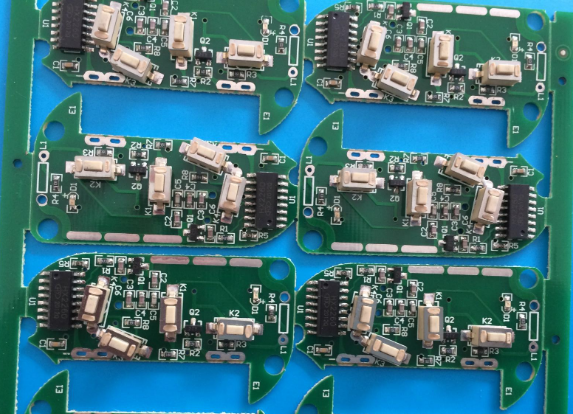Before SMT patch processing, we often encounter the situation that the materials supplied by customers or the materials purchased by the company are not vacuum-packed. Due to the storage under the condition of uncertain production time, it is easy for the materials themselves to absorb moisture. If we do not perform a drying process on the PCB or components, when the reflow soldering or wave soldering furnace is suddenly heated above 200 degree Celsius during the soldering process, the volume of water vapor will quickly expand due to the rise in temperature. As the temperature of the welding equipment continues to increase, water vapor cannot be emitted from the PCB or components, and PCB blistering, swelling, and board explosion are likely to occur. Then the main purpose of baking PCB and components is to dry the moisture-absorbing components, so as to avoid deformation during the furnace, oxidation of the pads/pins, and blistering and delamination of the board! So how should we set a reasonable baking temperature value? The following is an explanation for you to set different temperature parameter values for different component baking.
1. Baking time and temperature setting

1. Tape-packed components: Strip-packed ICs, transistors, and terminals without vacuum packaging and whose production date exceeds one year must be baked at a temperature of 60°C for 12 hours.
2. Tray SOP, QFP, PLCC and other ICs: Whether it is vacuum packed or not, it is determined whether to bake according to the humidity indicator card in the vacuum package of the tray IC. If four or six colors display the 20% part of the card, three The 10% part of the color display card becomes lavender, indicating that the parts have been damp and the IC must be baked. The baking temperature is 125°C for 8 hours. It is required that each stack of IC is separated by more than 5MM. There must be convection between the layers so that the hot air in the oven can circulate between the layers.
3. Tray BGA: After taking out the BGA, it will be baked regardless of the bulk material or pallet packaging. The tray is used to load the BGA into the baking box (the incoming tray must be marked with a temperature resistance of 125 degree Celsius or higher before it can be used); The baking temperature is set to 125°C, and the baking time is 24 hours. If the storage period is exceeded or the vacuum package is invalid, it must be baked at 125°C for 24 hours. It is required that each stack of BGA is separated by more than 5MM. There must be convection between the layers so that the hot air in the oven can circulate between the layers. The baked BGA must be mounted within 4 hours.
4. PCB circuit board: 1. The production date of the substrate is within 6 months but without vacuum packaging, it needs to be baked, the temperature is set to 110 degree Celsius, and the baking time is 2 hours. 2. The production date of the substrate is more than 6 months, and it must be baked. The temperature of the baking plate is set to 125 degree Celsius, and the baking time is 4 hours. 3. The temperature of baking the main substrate and the substrate containing BGA is set to 125°C, and the baking time is 8 hours. 4. All DIP process substrates need to be baked. The baking temperature is set to 85°C and the baking time is 8 hours.
The PCB in the above baking method is placed horizontally, and the maximum number of a stack is 30 pieces. After the baking is completed, open the oven and take out the PCB and place it flat and cool it naturally.
2. Matters needing attention:
1. For non-explosion-proof baking boxes, do not put flammable, volatile, and explosive materials into the box for drying treatment (such as packaging plastic bags when baking PCBs cannot be baked with PCBs), and do not put the The equipment is placed in a flammable and explosive environment to prevent accidents.
2. Do not place items too densely or overloaded, and there must be a certain gap between items.
3. When opening the drying box, the blast must be turned on before heating; the exhaust valve on the top of the box is half open during use.
4. If the customer has special baking specifications, the customer specifications shall prevail.
5. The PCB operator bakes according to the baking parameters of each part and fills in the "Baking Record Form". IPQC needs to monitor and confirm the temperature that is being baked. If the deviation exceeds ±5°C, it needs to notify the engineering staff to deal with it.